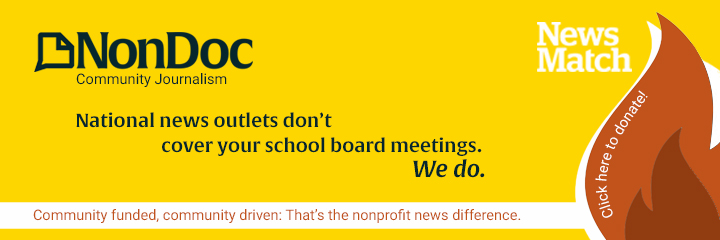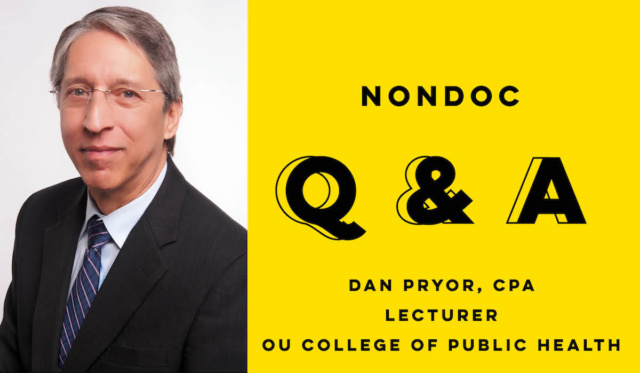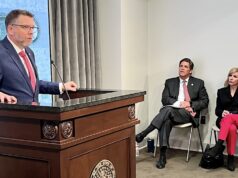
Health care finance is a hot-button topic these days. We have covered our fair share of the issue, from price transparency in the form of HB 2216 to the financial implications of managed Medicaid.
For a closer look into some of these issues, we reached out to Daniel Pryor, a lecturer at the OU College of Public Health and former senior vice-president of finance at OU Medical Center.
Responses have been lightly edited for grammar, style and length.
Price transparency has been a hot topic in health care recently. How feasible is price transparency as a goal? To what degree is the lack of price transparency a problem?
A person can get on the internet and compare prices for just about any commodity — cars, groceries or electronics. Once the product has been selected, one can simply click through the checkout and pay out of their pocket. If someone else were paying, what would keep a person from ordering 10 television sets?
Unfortunately, people are not commodities, and the health care payment system is based on someone else paying. Insurance companies, to counter unnecessary usage of services, developed a shared payment system with the consumer in the form of copayments, co-insurance and deductibles.
Because someone besides the consumer is the primary payer of health care services, price, in most instances, is not an issue. Contracts between the insurance company and providers (hospitals, physicians) are entered into that set the payment rate for services that are not subject to price. To complicate matters, the consumer also has a contract with the insurance company setting the payment rate of their share of the contracted price.
And, because people are not commodities, the amount paid for a procedure performed on Patient A is seldom the same as the same procedure performed on Patient B. Trying to determine what a person would pay out of their own pocket for a service would depend on many variables, including the limits of their own contract with the insurance company. Most providers have a method to estimate a payment for uninsured patients, however, those estimates can vary wildly from what is ultimately the expected payment.
Health care is not manufacturing cars — it is treating an individual, and individuals vary wildly in health status, needs and costs to treat. For these and many other reasons, price transparency is not feasible, in my opinion.
Consumers are not generally free to move from physician to physician, nor are physicians free to move from one hospital to another, nor are the hospitals free to charge consumers differently or accept payments differently from the contracted amount.
Suppose Hospital A has a price for a procedure of $10,000, but the price at Hospital B was $2,000. Your physician has privileges at Hospital A. You have to go to Hospital A, unless you change physicians, and that may not be possible or feasible. It may turn out that you have met your deductible, and it would cost you nothing to go to Hospital A, but Hospital B is out-of-network with your insurance company and you would have to pay the full $2,000.
The list of issues just goes on. Transparency is not the problem. The problem is the absence of a free-market system.
HB 1013 proposes an expansion of authority for independent practice for mid-level providers, including physician assistants and nurse practitioners. Would the addition of mid-level providers practicing more or less independently pave the way toward better access to care in Oklahoma, particularly rural areas?
It would appear that allowing independent nurse practitioners or physician assistants could improve access to health care. It would potentially put more health care professionals in areas where shortages exist. The issue would be if the number of mid-level providers available would make a difference and whether they would be willing to locate in areas of need.
There is a reason physicians aren’t located in rural areas, the least of which is quality of life. Income is certainly of prime importance, and more nurse practitioners would be in rural locations now if it were economically feasible.
What would happen with the relationship between physicians and mid-level providers now? Would the physician continue employing mid-level providers if they were independent? Would mid-level providers be drawn to practice in rural locations? Would they have enough volume to make it financially feasible?
I think separating mid-level providers from physician supervision, while it seems to make sense, might jeopardize the current relationships and do little to improve access. While there may be a need for access in rural communities, I don’t believe there is enough volume to make it work financially. While many states have done this, I don’t know that their access is any better than in Oklahoma. I’d have to research this.
It appears for the moment that the ACA and health insurance exchanges are here to stay for at least a little while longer. Do you anticipate a change to the trend of rising premiums and high deductibles in health exchange plans?
I think rising premiums and high deductibles are here for a while. The reasons behind the increases have not gone away, and I have seen little in the proposals from the new administration that will impact this trend. Subsidized high-risk pools will help lower premiums for the general population, and putting the risk-corridor subsidy back for the insurance companies will entice more companies to re-enter the market. However, these are basically gimmicks. Insurance works because the insurance company is able to calculate its risk and amount of loss.
Since the HMO Act of 1973, health care insurance has gotten away from episodic and predictable risks and losses and has turned into a health warranty product. It would be like filing a claim for an oil change or new tire with your car insurance company. How much would your car premium have to go up if it included batteries, tires, oil changes or windshield wipers? And, then, the insurance company would have to introduce a co-pay to keep you from buying a new tire every month because you decide you like running over nails.
It wouldn’t take long before we would all be complaining that we couldn’t afford car insurance. The answer, ultimately, is to get back to true insurance: large pools to share the risk and coverage of health care events that can be predicted and amount of loss estimated.
What is an issue of health care finance that most people may not know about but that might affect them the most?
People choosing an insurance plan based solely on low co-pays and deductibles.
The fact is insurance companies offset these with higher premiums. Consumers should add the cost of staying healthy (the insurance premiums) and the total out-of-pocket amount (cost of being sick) to calculate the total health-cost exposure. This total should be compared with other plans to determine which plan offers the best deal.
For example, a plan may have a 20 percent co-insurance provision on some services. Twenty percent of what? How much is that? How does it compare to a plan with a $50 co-pay for the same thing? Probably not surprisingly, no one knows. Why is it in there? It sounds expensive, so people go for a co-pay plan that may actually cost a lot more.
Oklahoma is considering a shift to Medicaid managed care. What are your thoughts from a health care finance perspective?
Generally, managed care leads to higher prices and less access — higher prices because “managed care” contracts have lower payment rates, and less access because the insurance company must control utilization and direct the enrollees to lower cost settings.
Oklahoma had a program a few years ago called Heartland. Heartland was an administrative and financial nightmare for providers and was discontinued after four or five years. This time, the state is considering a similar product for the aged, blind and disabled. The secret to cost containment in managed care is utilization control, and an insurance company with experience in case management and established networks should be able to contain costs.
I suspect this population is less apt to seek out health care in high-cost settings (e.g., emergency department) and will likely be more compliant with the program. I think the state could control costs by doing this, the insurance company could make money, and the enrollees would benefit from their health status being closely monitored and treated timely.
We have some bowling questions for you, as an avid bowler: What is your average score as a bowler? If you were on the PBA tour, what would your nickname be from the announcers? Have you named your ball?
I was a pretty avid bowler in my day. The last official average was 176. I did have a 789 series one time: 14 strikes in a row (ended first game with four and rolled 10 in the second game). My high game was 289. I was second-highest in the city that week.
I wouldn’t have a nickname, but I did call my ball many things I can’t mention.
(Editor’s note: Ashiq Zaman is a graduate student at the OU College of Public Health and is enrolled in a class taught by Dan Pryor.)





















